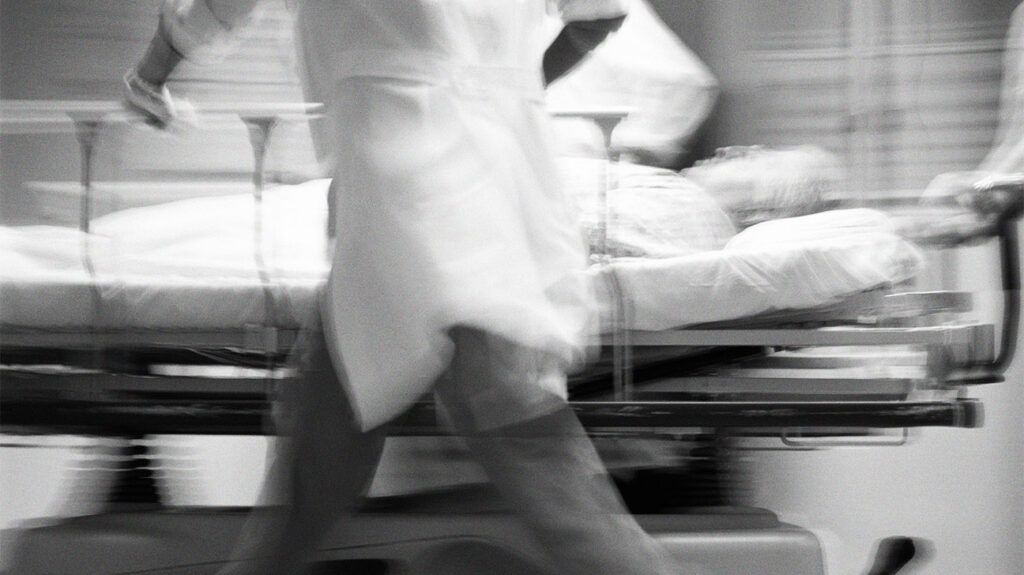Emphysematous cholecystitis is a rare but serious infection that causes gas to form in the gallbladder’s walls. It stems from acute cholecystitis — inflammation of the gallbladder — and requires emergency surgery.
The condition is most common in older male adults with diabetes. It can happen due to the gallbladder walls not getting enough blood flow, which can trigger the start of the infection.
Read on for more information about emphysematous cholecystitis, including its symptoms, causes, and treatments.

The gallbladder is a small, pear-shaped organ that sits right below the liver. It is part of the biliary duct system and holds bile, a digestive fluid made in the liver.
When a person eats foods high in fat, the gallbladder releases bile to digest the fats.
Acute cholecystitis is swelling and inflammation of the gallbladder that happens when bile becomes trapped, sometimes due to a gallstone or other causes.
Emphysematous cholecystitis is a complication stemming from acute cholecystitis. It only happens to about
It occurs when bacteria begin to grow in the gallbladder, causing fermentation, which can lead to tissue death and gas formation.
Prompt diagnosis and treatment are essential.
The condition most often occurs in males over the age of 60 who also have diabetes. Other health conditions that put a person at higher risk include peripheral vascular disease and being immunocompromised.
Early symptoms of emphysematous cholecystitis may include:
- moderate upper right abdominal pain
- fever
- nausea
- vomiting
- an ill appearance
Because symptoms are moderate and similar to other conditions, the condition may go unrecognized at first. However, without prompt treatment, a person
Later symptoms may include:
- a rapid heart rate
- abdominal swelling
- shock symptoms, such as dizziness, pale skin, confusion, cold, chest pain, and sweating
- low blood pressure
Emphysematous cholecystitis
Problems with the cardiovascular system or the arteries feeding blood to the gallbladder may limit blood flow to the gallbladder, causing the walls to die.
People with diabetes often have more anaerobic bacteria present in their abdominal cavities than people without diabetes. These bacteria are usually the cause of the infection that starts in the gallbladder’s dead walls.
The most common bacteria doctors find causing these infections include:
- Clostridia
- Klebsiella
- Escherichia coli
- Enterococci
- Anaerobic streptococci
To diagnose emphysematous cholecystitis, a healthcare professional will ask questions about a person’s medical history, onset of symptoms, and current medications.
After performing a physical exam, they may order blood work and several imaging studies.
Ultrasound is the most common way to diagnose conditions related to the gallbladder. During the exam, the technician may see air present in the gallbladder’s walls.
A CT scan with contrast dye can confirm the presence of air in the gallbladder.
An X-ray may reveal the air in the gallbladder, and an MRI scan can also accurately display the presence of air and necrosis.
Lab work may reveal elevated white blood cell counts, indicating an infection. Liver function tests can either be normal or abnormal, and blood sugar levels may also be elevated.
Treatment for emphysematous cholecystitis is emergency surgery to remove the gallbladder.
If a surgeon does not believe the gallbladder has a hole in it — perforation — they may remove it using laparoscopic surgery. Laparoscopic surgery involves using several small incisions in the abdomen to remove the gallbladder.
If the surgeon suspects a perforated gallbladder or other complications, they may opt for an open cholecystectomy, which means they will make one larger incision to remove the gallbladder.
Surgeons perform both surgeries in operating rooms while the person is under general anesthesia.
Medical professionals will start intravenous (IV) antibiotic therapy right away and continue it for
Emphysematous cholecystitis is a serious condition that can be life threatening if a person does not receive prompt treatment. Early treatment helps reduce the risk of mortality.
Healthcare professionals consider people with emphysematous cholecystitis to be critically ill and typically manage their care in the intensive care unit (ICU).
There, the medical team will ensure the person receives hydration, continued IV antibiotics, and cardiovascular support if needed.
The team of professionals may include:
- general surgeon
- endocrinologist
- ICU nurses
- intensivist, which is a critical care physician
Complications of the surgery can include injury to the bile duct, bile leak, or infection of the surgical incision. The outlook is guarded, even after a successful surgery.
This section answers some frequently asked questions about emphysematous cholecystitis.
Is emphysematous cholecystitis a surgical emergency?
Yes, emphysematous cholecystitis is when a person has a gas-forming bacterial infection in the gallbladder walls. The condition is life threatening and requires emergency surgery to remove the gallbladder.
What is the management of emphysematous gallbladder?
The first step in managing emphysematous cholecystitis is emergency surgical removal of the gallbladder.
Getting IV antibiotics started as soon as possible is crucial. After surgery, the person will remain in the ICU for IV hydration, continued antibiotics, close monitoring, and medical support.
What are the symptoms of cholecystitis gas?
Emphysematous cholecystitis — or cholecystitis gas — symptoms include fever, moderate upper right abdominal pain, nausea, and vomiting.
Without prompt treatment, symptoms can progress into shock, redness, and swelling of the abdomen, and the person can deteriorate rapidly.
Emphysematous cholecystitis is an emergent condition in which gas-forming bacteria infect the walls of the gallbladder. The condition is very rare but is most common in adult males over the age of 60 with diabetes.
Treatment includes emergency surgery to remove the gallbladder, IV antibiotics, and medical management in the ICU.
The condition can be fatal, and the prognosis is guarded, even after a successful surgery.
